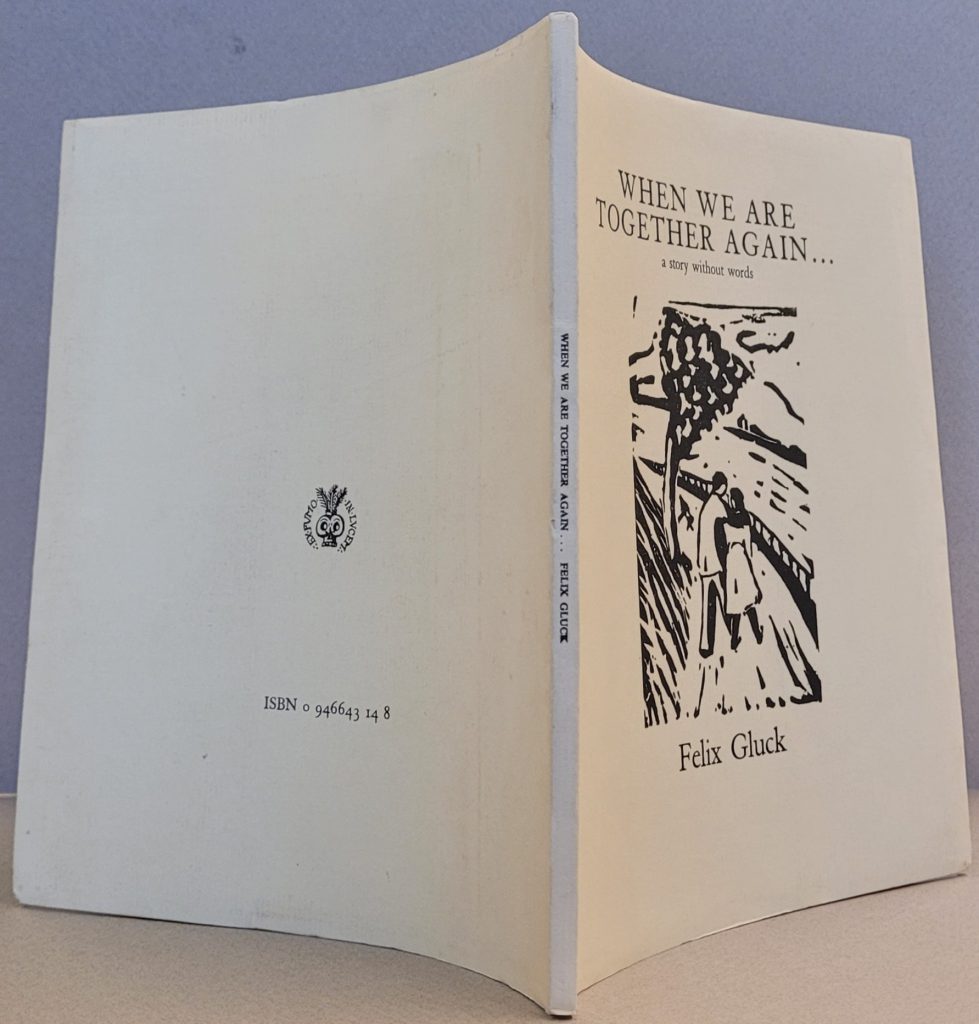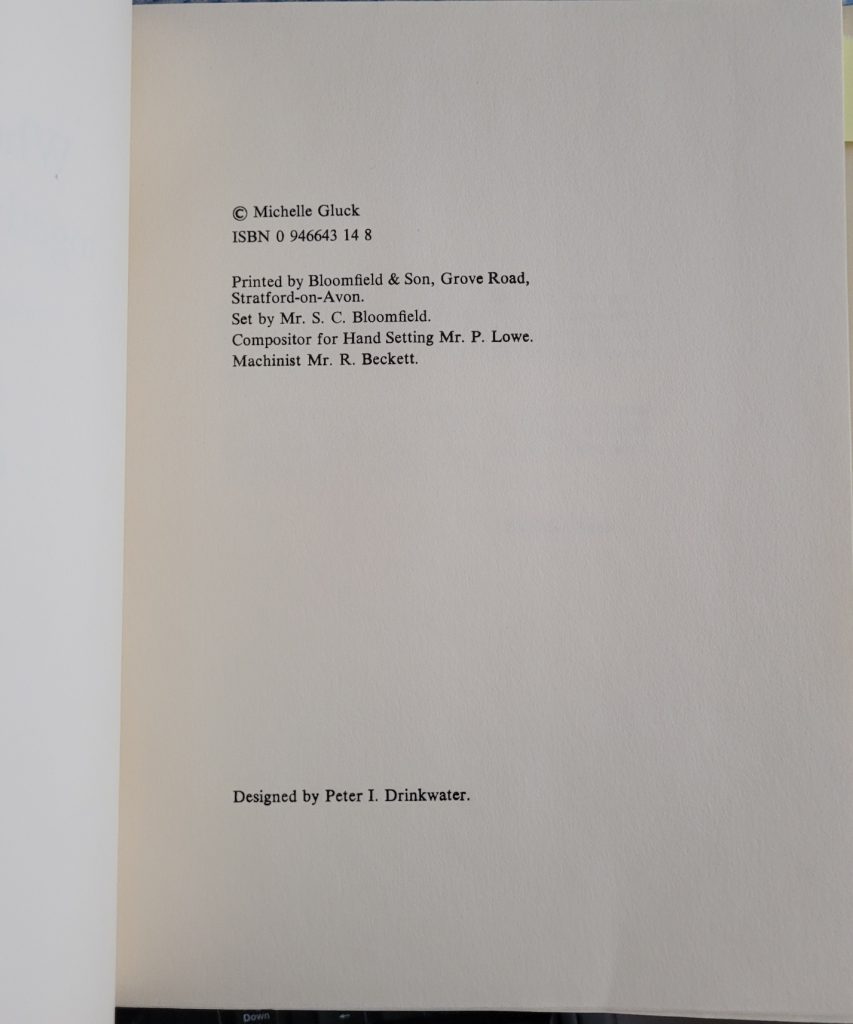
Image credit: Victoria and Albert Museum
Felix Glück’s wordless novel, Trostbüchlein für Liebende, of 1966 was later redone in English as When We Are Together Again.
Thanks to Kurt Webb of Silent Story Books for alerting me to the German edition of this story,
AND
A special thanks to the artist’s son, Dr. T. Gluck, for his patience and insights into the production of both issues of the book.
Felix Gluck
- born 13 May 1923 in Fürth, Bavaria, Germany
- 1936 his family fled from the Nazis to Czechoslovakia and then to Hungary. There, in the early years of the war, he studied painting at the Budapest Free Academy of Art under Robert Bereny and Aurel Bernath.
- 1944-5 imprisoned in a concentration camp, where he contracted tuberculosis.
The black and white linocuts in this book were made between 1946 and 1948 while Felix was in a sanatorium in Davos Switzerland, recovering from the tuberculosis he had contracted during his time in Mauthausen concentration camp.
As per the Colophon to the 1986 edition by his wife, Michele Gluck.
This is the story of a dream. A love poem without words, in a city somewhere and at some point where love has no name and knows nothing of the seasons. Here longing and fulfillment meet, seek each other again, find hands and melt into one and bring the artist’s sunny landscape to life.
Translated from the German preface to the 1966 edition
NOTE: The images were used for two publications; in 1966 and a posthumous publication in 1986. It is my impression that neither the 1966 or 1986 publications were printed directly from the linocuts. A number of the 1966 images were reproduced smaller than the size of the blocks. The 1986 publication has some images the same size as (or close to) the original blocks. Even though this was first published by the artist in 1966, I have included this book because the blocks were cut in the late 1940s.
1966 Trostbüchlein für Liebende: Wenn wir uns wieder sehen. Kunst im Bild und Kunst im Wort
Title translated by Google as: “Consolation book for lovers: When we see each other again. Art in pictures and art in words”
NOTE: one can be fairly certain the images in this book were not printed directly from the blocks.





1986 When We Are Together Again: A Story Without Words
This is not a reprint of the 1966 publication. It is the same story with slight changes published posthumously by Gluck’s wife, Michelle Gluck. I do not have any information as to why the changes were made – possibly as a result of discussions she had with her husband between 1966 and when he passed away in 1981.
- 1966 had 27 images while 1986 used 31 images.
- 1986 used 26 of the 27 images from 1966.
- the 7th image in both editions are very similar but the intention is more clear in the 1986 edition.
- 4 new images were added to 1986; presumably the artist cut more blocks in 1948 but didn’t use them all for the 1966 publications. Presumably, after consideration, it was felt some of the left out blocks would help the story.
- The order of the images was changed slightly from the 1966 publication, once again presumably to help the story telling.
- The image on the cover for each publication was taken from images in the book but the 1986 cover shows a clearer relationship between the couple. The 1966 cover has a man dealing with (a flower seller?) and a woman further down the path while the 1986 cover has the couple arm-in-arm on the path.








COMMENTS
If you disagree with something on this page, have an improvement, or have a comment please contact me
wn at wordlessnovels.com
Any information used will be given a credit line.